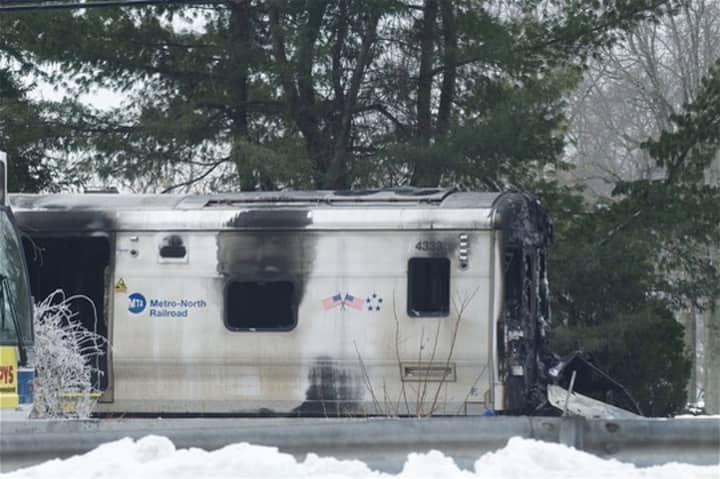Teens were hard at work putting their heads together exchanging ideas, hands moving almost as fast as their thoughts.
They shared one common purpose during the all-day Digital Arts Experience competition on Saturday in White Plains: Come up with designs to improve rail crossing safety.
The tournament was organized by Alan Brody, the widower of 49-year-old Ellen Brody of Edgemont. The mother of three was killed in a February 2015 tragedy when her SUV was hit by a Metro-North commuter train in Valhalla.
Ever since that accident, which also took the lives of five train passengers, Brody has been a vocal advocate of bringing safety to railroad crossings. It's one way to honor his late wife's name, and prevent future catastrophes, he says.
He is busy filing lawsuits and working with politicians to get legislation passed to upgrade rail crossings. He's making it a point to talk to anyone who will listen.
Stymied and disappointed on all fronts, Brody said he decided to turn to the next generation in hopes they will come up with the ways and means to make the needed changes to protect the lives of both drivers and train commuters.
"When I visited the 'safety upgrade' the MTA did at Roaring Brook last year, I saw that for a taxpayer grant of $500,000, they basically painted the road, put in some plastic poles and added the most obscure 'warning sign' on the Saw Mill," Brody said. "And this is in one of the richest, most influential towns in the country."
That's when Brody realized this issue was something he was going to have to tackle on his own. So he turned to a younger generation of brainpower.
The winning solution at Digital Arts Experience's Teen RR Safety challenge was designed and built in just five hours by the Putnam Valley High School team led by Jasper Katzban.
Their under-$100 prototype employed a self-aware system with sensors and volumetric cameras that could assess a car, or any other other object on a track, and slow or stop an oncoming train accordingly.
The Putnam Valley High School team delivered the model to assess the current safety of every track. The technology can automatically slow, stop or speed up the oncoming train, thereby giving the engineer the advantage real-time look-ahead.
It also offered a panic button at the track for the public to alert the railroad dispatcher.
The proposed use of a volumetric camera -- a bright idea adopted from virtual reality and 3D cameras, can assess the size and mass of an object. These breakthrough cameras cost as much as $125,000 in their full feature capacity, but a consumer version, which could adequately handle the challenge costs as little as $300.
Other school teams showed just as much moxie when it came to creativity. Mamaroneck High School introduced a model that included a car removal device on the tracks, laser sensors and impossible-to-miss crossing lights.
The Mamaroneck students, assisted by computer science teacher Jigar Jadav, created a prototype using an Arduino microcontroller and Legos. Paul Pedrozo was MHS' team leader. Other Mamaroneck team members were Pablo Garza, Sam Brause and Andrew Katz.
The Mount Vernon team headed by Tristan Fordyce, a small group by comparison, introduced the idea of a bright light and countdown clock.
It took Brody well over a year to have this issue become part of the Digital Arts Experience competition. He reached out to executives at IBM, billionaires he knows like Steve Case and Ted Leonsis of AOL, Mark Cuban and even the IEEE's Internet of Things. They were sympathetic, but not interested in this problem, not even the larger infrastructure implications, Brody said.
That's where teens from schools across Westchester County came in. Brody, and others, are hoping that competitions like Digital Arts Experience will spark creativity adults have failed to address.
So far, it's working.
"The judges were struck by the richness of the ideas and the degree to which the teens were able to implement the proof of concept models with the sensor/controller sets. Considering that they were able to do this in less than five hours is a staggering achievement and a message to officials who believe they have neither the funding nor the creativity to come up with safety improvements," Brody said.
Brody believes the answer would be to cherry-pick the best ideas from each team and incorporate them into one total, low-cost, self-aware system.
"The problem with adults is they are beholden to their preconceived notions and they will reflexively act to protect it. Kids don’t," he said.
"In this case, the kids are our new investors and if we let them, they will make the future," Brody added.
Click here to follow Daily Voice Rivertowns and receive free news updates.







